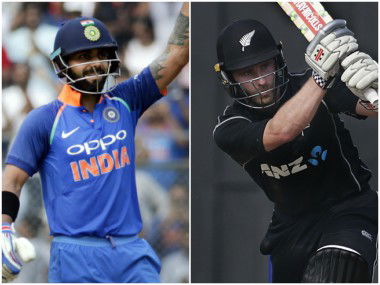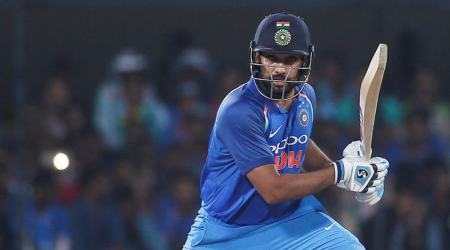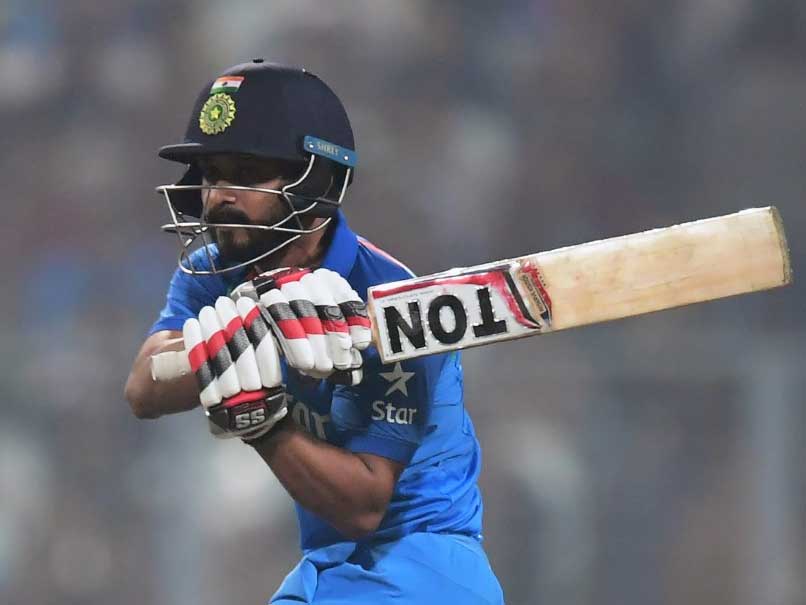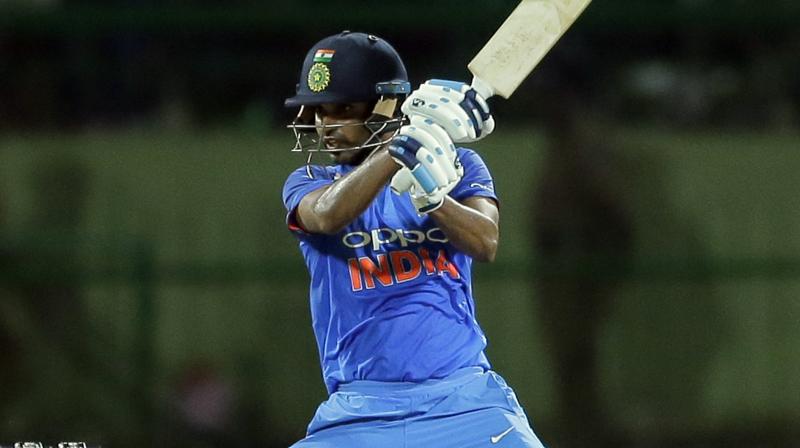
via Imago
Kohli and Williamson

via Imago
Kohli and Williamson
The Indian team was on a mission to win the India-New Zealand ODI series by a 3-0 margin. The need makes its?space in order to retain the number one ranking from South Africa. But unfortunately, India encountered an emphatic defeat at the hands of New Zealand in the first ODI in Mumbai. Failing to access the pitch properly and putting forth a dismal effort with the ball, caused them the setback.
The Kiwis, who had arrived into the series on the back of intense preparation, rose to the occasion handsomely. And they sauntered to a comprehensive 6-wicket triumph. If their bowling attack was led adeptly by an in-form Trent Boult, the visitors put on a splendid performance with the bat as well to storm to a 1-0 lead.
ADVERTISEMENT
Article continues below this ad
India-New Zealand Series
5. Rohit’s recurring troubles against left-arm pacers

via Imago
The Indian Express
In spite of expressing his wariness regarding the menace posed by Trent Boult and his incredibly artful swing bowling, Indian opener Rohit Sharma failed to pay heed to his own pre-match words. Once the 28-year old pacer snared Shikhar Dhawan by converting the extra bounce on the surface into a wicket-taking opportunity, the elegant opener could have played true to his customary cautious tendency during the initial phase of the innings.
But Rohit kept offering chances to the Kiwi fielders and lived a charmed life. After an aimless aggressive shot saw him survive by a slender margin, the local lad’s luck eventually ran out. To a much fuller and quicker delivery than he would have anticipated, the right-hander inexplicably resorted to an almighty heave and consequently paid the price for his error in judgment. From Pakistan’s Mohammad Amir in the Champions Trophy to Australia’s Jason Behrendorff and Boult in more recent times, Rohit’s weakness against left-arm fast bowlers is becoming more pronounced with every series. With two more ODIs left, the southpaw from New Zealand will fancy his chances against the opener.
ADVERTISEMENT
Article continues below this ad
4. Jadhav’s number 4 spot in jeopardy

via Imago
NDTV Sports
ADVERTISEMENT
Article continues below this ad
More often than not, these bilateral matches serve as opportunities for teams to find their perfect lineup and transform themselves into a well-oiled unit before the big tournaments loom on the horizon. For India, the?number four position in the batting lineup has been a problem to ponder. Despite the team management’s earnest efforts to try different options to fit into the puzzle, no batsman stand out.
Just like in India’s previous ODI against Australia at Nagpur, Kedar Jadhav walked in at number four in this match. On a difficult pitch, it was imperative for him to adapt his game to the situation. And also it helped him build a platform alongside his captain. After scratching around for runs, the right-hander’s painful stay at the crease came to an end due to a soft dismissal. Well past 32 years, his international future is standing on shaky ground. A few more failures could see him sent back into the wilderness.
3. Bhuvneshwar’s takeover as batting cameo

via Imago
Deccan Chronicle
Bhuvneshwar Kumar’s cameo with the bat was among the very few positives for India from this match. Even though his impeccable death bowling might be alone to consolidate his place in the playing eleven, the technically solid right-hander?has been working on his hard on his batting skills during the course of the last few series. The effort that he had been putting behind the scenes showed during the last few overs of the Indian innings.
After the fall of Hardik Pandya’s wicket, Bhuvneshwar swelled India’s total by wielding the long handle in a diligent manner. He managed to smash two massive sixes against the likes of Adam Milne and Tim Southee. A couple of useful boundaries also meant that he finished with a valuable 15-ball 26 during the business stages of the innings. He is turning out to be a rather serviceable option to come in at number eight.
2. Kohli’s Strategies embracing setbacks

via Imago
Hindustan Times
Since taking over the ODI as well as T20I captaincy from Dhoni earlier this year, Kohli has been spotted time and again seeking out his predecessor’s help during pressure situations. While there is no harm in utilizing the seasoned campaigner’s inputs on certain aspects, one cannot help but feel that the 28-year old from Delhi needs to back his own instincts when the chips are down. In this particular match, he was seen having lengthy discussions with the wicket-keeper batsman on possible bowling changes.
With the game hurtling towards the finish line on the back of an immaculate partnership from Tom Latham and Ross Taylor, the need of the hour was to trust the spinners in delivering breakthroughs. More attacking fields could have been set in order to lure the well-set batsmen into committing errors. But the easy ones and twos on offer meant that the duo did not have to take unnecessary risks. Kohli’s decision to hold back his two wrist-spinners between overs 35 and 40 did not make much sense.
1. Latham and Taylor throwing a hard turf for India spinners

via Imago
Midday
During?India’s previous ODI assignment, the Australian batsmen certainly helped their cause by adopting confused strategies against the turning ball. Although their sweep shots did not carry any semblance of conviction. But their fallible batting techniques against spin stood up ruthlessly against the new combination of Kuldeep Yadav and Yuzvendra Chahal. New Zealand was not expected to do anything different as the warm-up matches as well as the ‘A’ series highlighted similar deficiencies too.
However, Tom Latham and Ross Taylor managed to propel the Kiwis to a clinical victory. But also they effectively created the template for the other batsmen to deal with the Indian spinner. The left-hander, in particular, impressed with his intelligent shot-selection and assured approach on a dicey track. He swept both wrist-spinner with consummate ease to pile the pressure on skipper Kohli. Taylor, as ever, employed the cut shots to pierce the field and disrupt the spinners’ momentum. India needs to regroup and come up with different plans for both these batsmen in the next couple of games.
ADVERTISEMENT
ADVERTISEMENT
ADVERTISEMENT
ADVERTISEMENT


